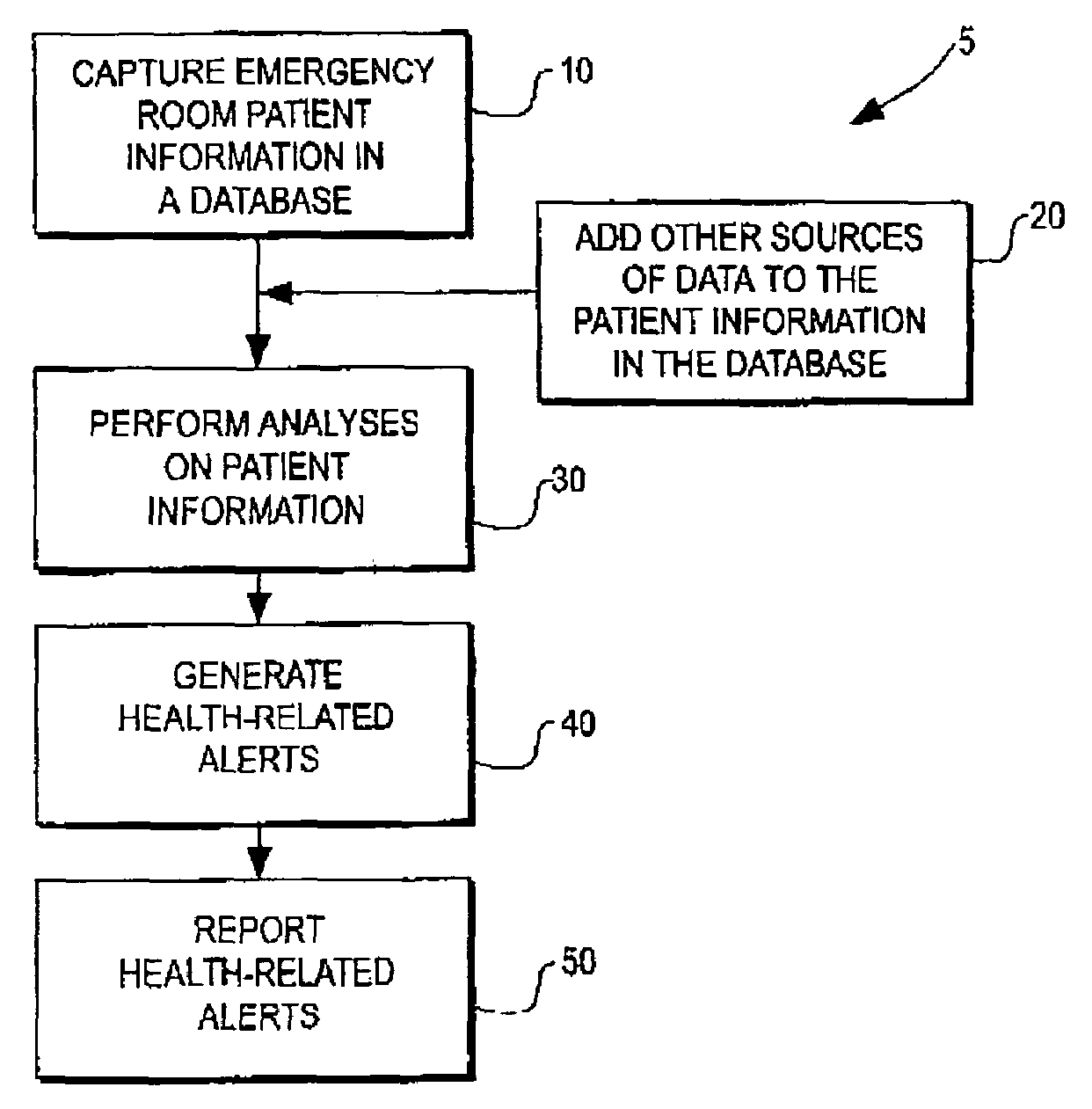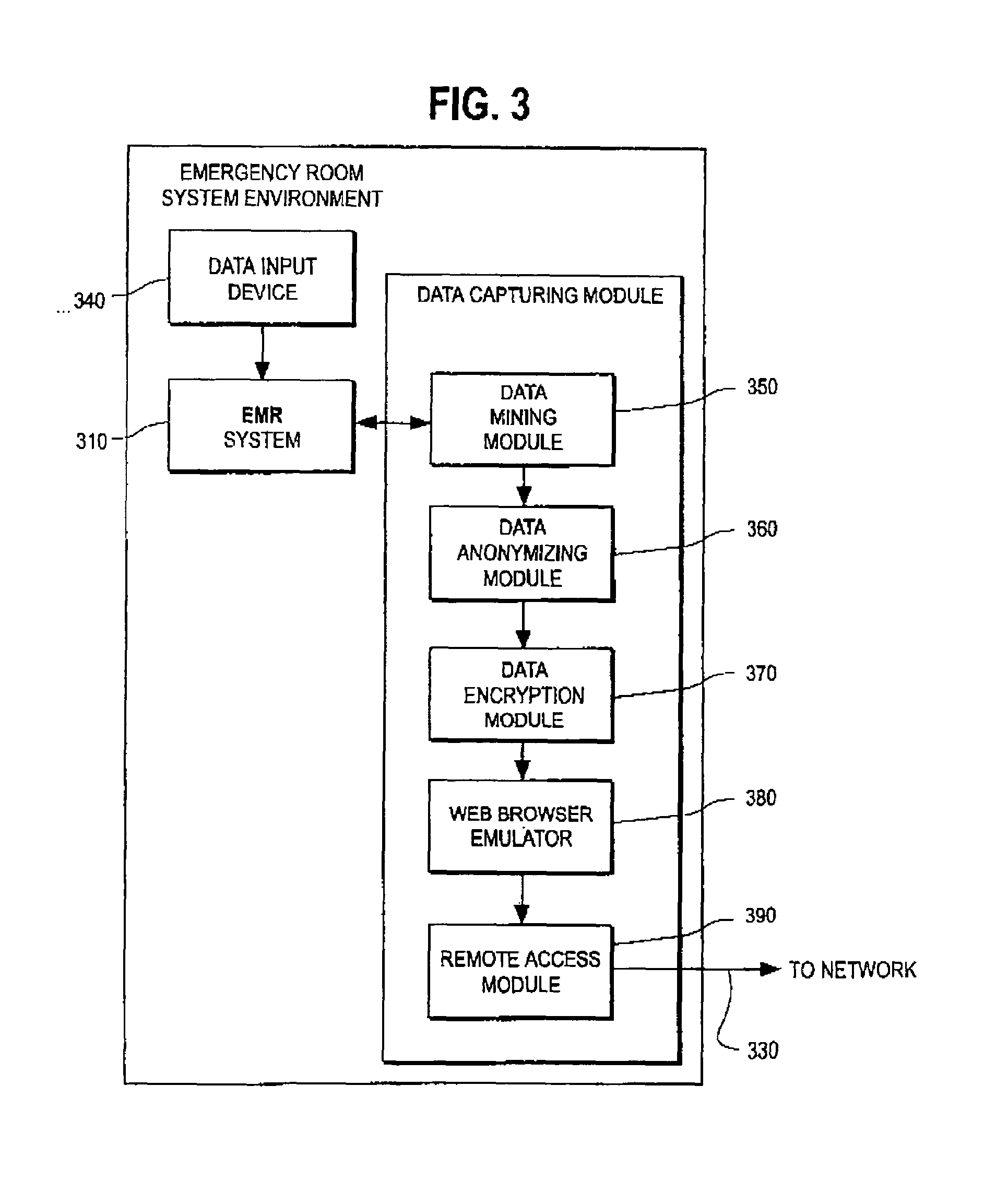Methods and apparatus for early detection of health-related events in a population
a technology for health-related events and methods, applied in the field of community health-related problems assessment, can solve the problems of not being able to detect anthrax in a timely manner for health officials and other governmental officials to properly react, and unable to implement a data management architecture that allows for active extraction of real-time data,
- Summary
- Abstract
- Description
- Claims
- Application Information
AI Technical Summary
Benefits of technology
Problems solved by technology
Method used
Image
Examples
Embodiment Construction
[0030]FIG. 1 is a flowchart illustrating a method 5 to provide early detection, classification, and reporting of health-related events in a population in accordance with an embodiment of the present invention. In step 10, emergency room patient information is captured from various emergency rooms in a community and stored in a central database at a central data collecting facility. In step 20, other sources of data are merged into the database that may be related to the emergency room patient information. For example, once a patient's zip code is verified within the database, socio-economic data and neighborhood demographic data may be merged into the patient's database record. In step 30, the patient information in the database is processed and analyzed using various techniques to determine if anything unusual is going on in the community. In step 40, health-related alerts are generated if the analyses in step 30 finds anything unusual. In step 50, any health-related alerts are rep...
PUM
 Login to View More
Login to View More Abstract
Description
Claims
Application Information
 Login to View More
Login to View More - R&D
- Intellectual Property
- Life Sciences
- Materials
- Tech Scout
- Unparalleled Data Quality
- Higher Quality Content
- 60% Fewer Hallucinations
Browse by: Latest US Patents, China's latest patents, Technical Efficacy Thesaurus, Application Domain, Technology Topic, Popular Technical Reports.
© 2025 PatSnap. All rights reserved.Legal|Privacy policy|Modern Slavery Act Transparency Statement|Sitemap|About US| Contact US: help@patsnap.com



